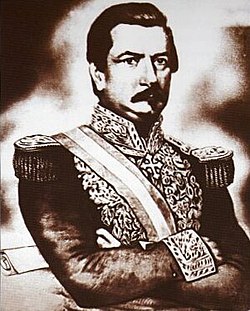| ||||||||||
| ||||||||||
| ||||||||||
Presidential elections were held in El Salvador on 4 December 1859. [1] Gerardo Barrios ran unopposed and was elected by the legislature. [2] In continuation of a long trend, Barrios was yet another Salvadoran president who was both a military officer and a politician. [1] [3]
